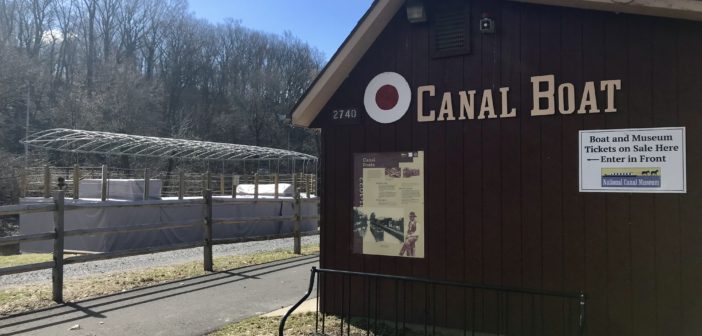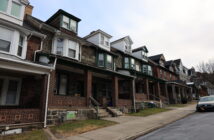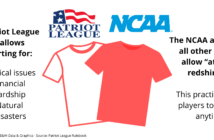Two mules pull the Josiah White II canal boat along the Lehigh Canal at Hugh Moore Park — a scene similar to one a passing observer would see in the 18th century.
During their ride, passengers travel to the old Locktender’s House and receive a history lesson through the eyes and words of a local canal worker. They leave the National Canal Museum with a greater understanding of the Lehigh Valley’s national historical significance.
Today, the Delaware & Lehigh, or D&L, National Heritage Corridor keeps the area’s history alive through programs that promote its heritage, health and wellness, nature and environment, and education.
D&L historian and archives coordinator Martha Capwell Fox said the corridor spans from the anthracite mines in Wilkes-Barre south to Philadelphia, a route on which coal was transported for sale — first on rafts, then boats and eventually railroads as technology improved.
Capwell Fox said eastern Pennsylvania was among the leaders in the United States for several industries — including coal, Portland cement, iron, zinc and silk — throughout the 18th and 19th centuries.
“You can read history that says the American Industrial Revolution began in New England, and there’s still historians who say that,” Capwell Fox said. “However, we didn’t build the country on cotton. We built the country on iron.”
D&L executive director Elissa Garofalo said the organization’s goal is to connect people to places along the long-distance trail, providing places to stay and ways to experience the Valley’s heritage.
Education programs placed along the trail made their way into Lehigh Valley schools in 2008 with the “Tales of the Towpath” fourth-grade curriculum, which Garofalo said 82 schools use.
Elementary schools use the program in fourth grade when students learn about Pennsylvania’s history and government, bringing the curriculum to a local level.
The “Tales of the Towpath” storybook introduces 10-year-old Finn Gorman and his family’s travels on a canal boat.
“Finn meets other children whose fathers are involved in the industries of the day — coal mining, iron, lumber, farming — all those things,” education manager Dennis Scholl said. “Through Finn’s adventures, the readers of the book gain an understanding of the importance of these industries, and they also learn a lot about canals and a little about railroads.”
There are 6,400 fourth-graders participating in the “Tales of the Towpath” curriculum, and Garofalo said many of them visit the National Canal Museum at Hugh Moore Park and the Freemansburg Canal Education Center for field trips and “immersion days.”
Isabella Campbell, a fourth grade teacher at Donegan Elementary School, said her students enjoy “Tales of the Towpath” and recommends that districts across the Lehigh Valley adopt it into their curriculums.
“I think it helps connect students to the past in a more authentic way,” Campbell said. “Often, they hear about the past and see it as something that doesn’t relate to them, so to hear this story told from a 10-year-old’s perspective, to have it happen in their own backyard, they feel more connected to the story.”
The D&L is also developing a curriculum for high school students taking ecology or environmental education courses. Scholl said it’s designed to introduce students to eastern Pennsylvania, from the time of the Paleoindians’ arrival through history to post-industrial life.
Garofalo said other programs include Trail Tenders, to which volunteers donated about 4,000 hours last year, and Get Your Tail on the Trail, a health program in collaboration with St. Luke’s University, for which 6,000 participants have logged over 3 million miles during the past five years.
“(The programs get) people to understand that this trail is in their backyard, that it’s free, that you can go out and it’s like having a gym in your backyard,” Garofalo said.
Director of trails and conservation Claire Sadler said anyone can get involved in D&L programs, including Get Your Tail on the Trail. Participants can join groups or sign up as individuals, and the program is designed to provide challenges and free events to participants while allowing them to complete their goals on their own time.
Sadler said they are also launching a D&L Trail Towns program, through which the organization works directly with interested towns that the corridor runs through to help them prepare for the economic benefit and impacts of the trail.
“As we connect more and more of the trail, it will provide 165 miles of trails when it’s all finished,” Sadler said. “Not only are local communities using the trail for their health and nature and enjoyment, but they’re also going to benefit from all of the visitors that are coming.”
In 1988, the corridor was recognized as the third National Heritage Area in the U.S. Since then it has grown to about 92 percent completion and will celebrate its 30th anniversary in June.
In the Bethlehem area, trekkers can walk, run or bike across Sand Island, which is at the north end of the Fahy Bridge, and the town of Freemansburg, where the Freemansburg Canal Education Center is housed in a historical mule barn.
“We want for people to have an appreciation for their own backyard,” Garofalo said. “The more they appreciate their own place in America’s history, the more they’re going to take care of it and they’re going to tell their kids about it. Those education programs are long-term stewardship programs.”
Capwell Fox said the canal is a large part of America’s early industrial years and helped build the country’s economy. Through the D&L, present-day Lehigh Valley residents can learn about the area’s history, the people who settled the land before and how vital the Lehigh Valley was to the growth of the entire U.S.
“The story of the canals was just part of the story,” Capwell Fox said. “The real heritage of the canals was what they triggered.”






Comment policy
Comments posted to The Brown and White website are reviewed by a moderator before being approved. Incendiary speech or harassing language, including comments targeted at individuals, may be deemed unacceptable and not published. Spam and other soliciting will also be declined.
The Brown and White also reserves the right to not publish entirely anonymous comments.
1 Comment
Wonderful article! Thank you so much! Lehigh shines!